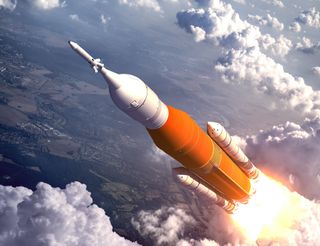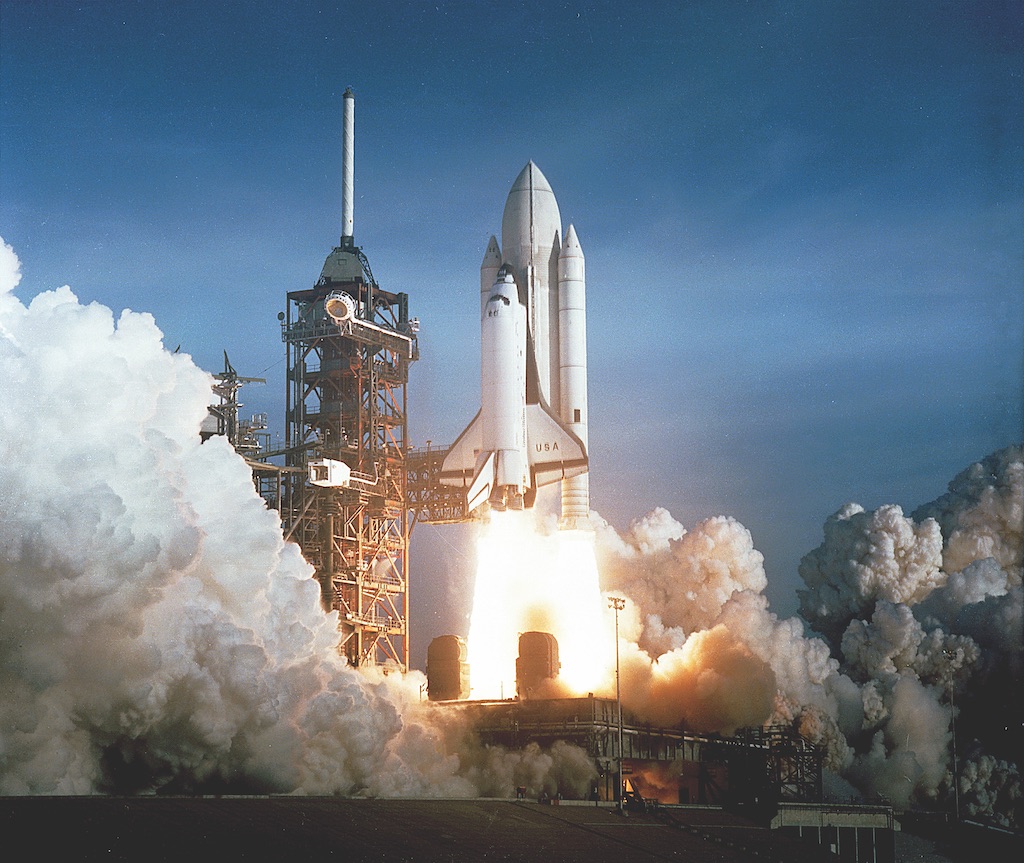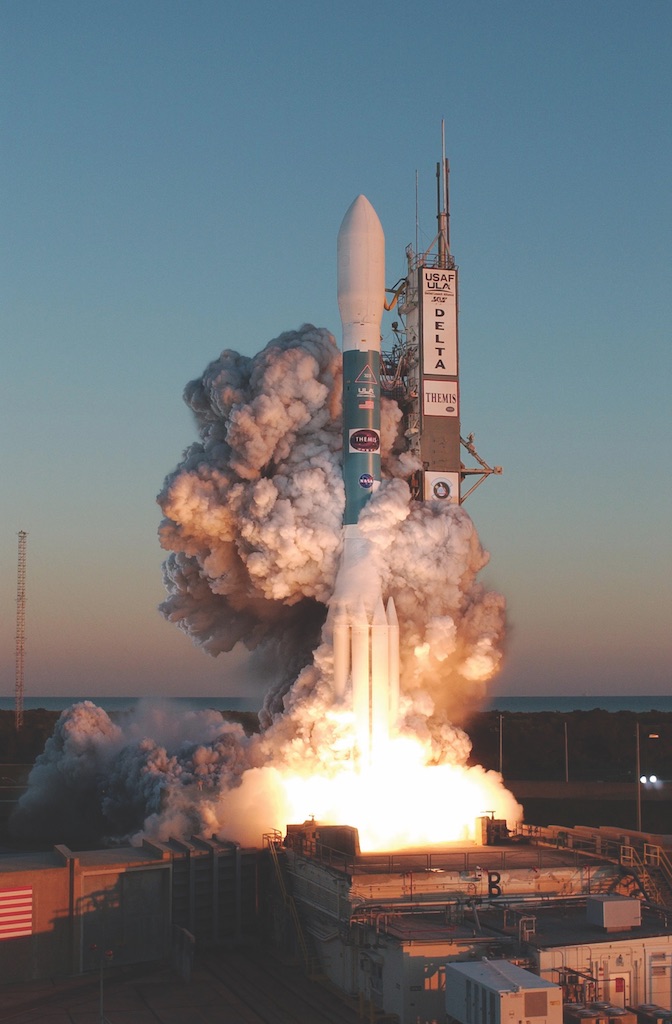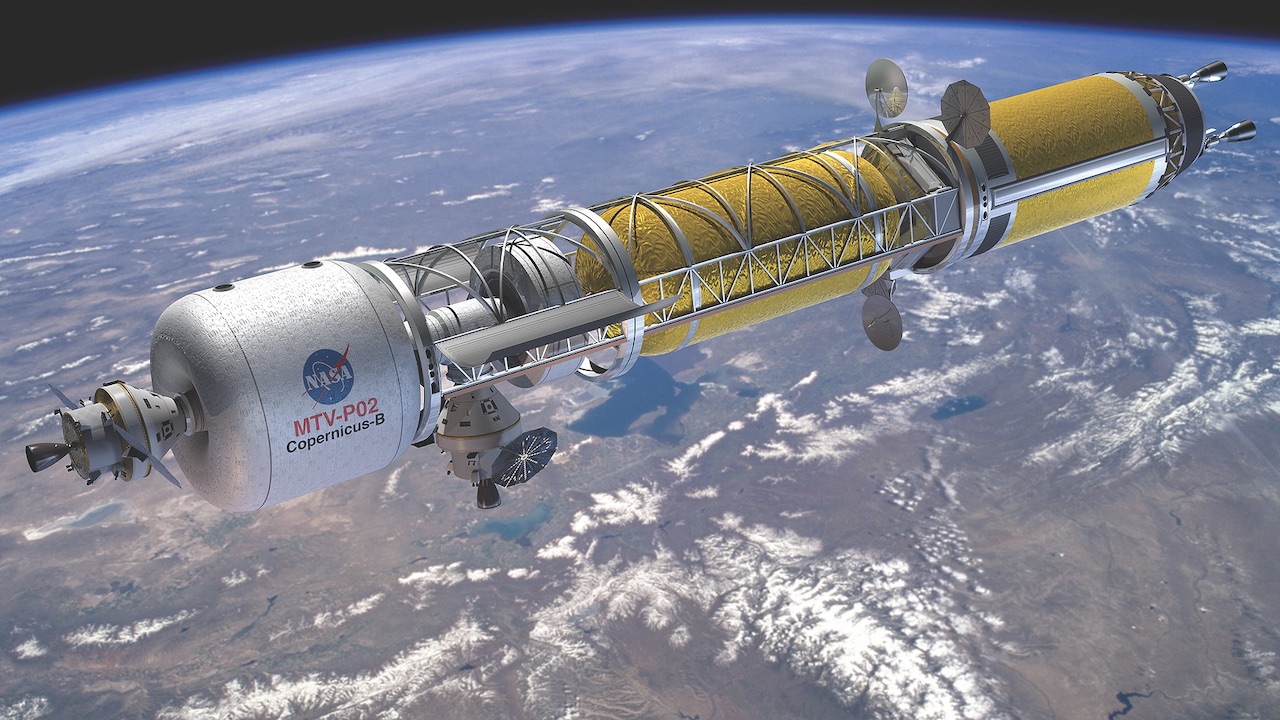Second Release Three Things You Need to Know About Rockets
How rockets work: A complete guide

Rockets are our species' best way of escaping the atmosphere of World and reaching space. But the process behind getting these machines to work is far from simple. Here's what you need to know about getting a rocket into infinite.
How rockets elevator off
Writers and inventors have dreamt of exploring the universe beyond Earth for centuries, but the existent challenges of traveling into space only became clear in the 19th century. Experimental balloon flights showed that Earth's atmosphere thins out rapidly at high altitudes, and so even before powered flight became a reality, engineers knew that devices that create a forward or upward force past pushing against a surrounding medium similar air — such every bit wings and propellers — would be of no use in space.
Another trouble was that combustion engines — machines such as steam or gasoline engines that generate power past burning fuel in the oxygen from Globe'due south atmosphere — would also fail in airless infinite.
Fortunately, a device that solved the problem of generating forcefulness without a surrounding medium had already been invented — the rocket. Initially used as weapons of state of war or in fireworks, rockets generate a force in i direction, chosen thrust, by the principle of action and reaction: exhaust fumes released by explosive chemicals are pushed out of the back of the rocket at high speed, and as a event the rocket is pushed in the other direction, regardless of any surrounding medium, NASA explains in this primer (pdf).
The key to using rockets in infinite is to carry a chemic called an oxidant that can perform the aforementioned role every bit oxygen in Globe's air and enable the fuel to combust.

The first person to seriously study the rocket's potential for space travel, Russian schoolteacher and apprentice scientist Konstantin Tsiolkovsky, commencement published his conclusions in 1903. He correctly identified the launch equally 1 of the biggest challenges — the moment where the rocket has to behave all the fuel and oxidant information technology needs to achieve infinite — every bit its weight is at a maximum and a huge corporeality of thrust is needed just to get it moving.
As the rocket gets underway information technology sheds mass through its exhaust, then its weight is reduced and the same corporeality of thrust will have a greater outcome in terms of accelerating the residuum of the rocket. Tsiolkovsky came up with various rocket designs and concluded that the most efficient setup was a vertically launched vehicle with several 'stages' — each a self-independent rocket that could comport the stages higher up it for a certain distance before exhausting its fuel, detaching and falling away. This principle, still widely used today, reduces the corporeality of dead weight that needs to be carried all the way into space.
Tsiolkovsky devised a complex equation that revealed the necessary thrust forcefulness needed for any given rocket maneuver, and the "specific impulse" — how much thrust is generated per unit of fuel — needed for a rocket to reach space. He realized that the explosive rocket propellants of his time were far too inefficient to power a infinite rocket, and argued that liquid fuels and oxidants, such as liquid hydrogen and liquid oxygen, would ultimately be needed to reach orbit and beyond. Although he did not live to encounter his work recognized, Tsiolkovsky'southward principles still underpin modern rocketry.
Taking flight
Rockets must delicately rest and control powerful forces in guild to arrive through Earth'southward atmosphere into space.
A rocket generates thrust using a controlled explosion as the fuel and oxidant undergo a violent chemic reaction. Expanding gases from the explosion are pushed out of the back of the rocket through a nozzle. The nozzle is a specially shaped frazzle that channels the hot, loftier-force per unit area gas created by combustion into a stream that escapes from the back of the nozzle at hypersonic speeds, more than than five times the speed of audio.
Isaac Newton's third police force of motion states that every action has an equal and opposite reaction, so the "activity" forcefulness that drives the exhaust out of the rocket nozzle must exist counterbalanced by an equal and opposite force pushing the rocket forward. Specifically, this force acts on the upper wall of the combustion chamber, simply because the rocket motor is integral to each rocket stage, we tin can recall of information technology interim on the rocket equally a whole.

Although the forces interim in both directions are equal, their visible effects are different because of another of Newton's laws, which explains how objects with greater mass need more force to accelerate them by a given amount. So while the action force rapidly accelerates a small mass of exhaust gas to hypersonic speeds each second, the equal reaction force produces a far smaller dispatch in the opposite direction on the far greater mass of the rocket.
As the rocket gains speed, keeping the direction of move closely aligned with the direction of thrust is critical. Gradual adjustments are needed to steer the rocket towards an orbital trajectory, but a severe misalignment tin can transport the rocket whirling out of control. Most rockets, including the Falcon and Titan series and the Saturn V moon rocket, steer using gimballed engines, mounted and so that the entire rocket motor can pivot and vary the management of its thrust from moment to moment. Other steering options include using external vanes to deflect the exhaust gases as they escape the rocket engine — nearly constructive with solid-fueled rockets that lack a complex motor — and auxiliary engines, such equally small thruster rockets mounted on the sides of the rocket stage.
How a rocket'southward motors work
Modern rocket motors have come up a long mode from fireworks, the starting time in rocket history. Relatively elementary solid rockets, about ofttimes used as boosters to provide extra thrust at launch, still rely on the same basic principle of igniting a tube containing a combustible mix of fuel and oxidant. Once ignited, a solid rocket will go on to burn until its fuel is exhausted, but the charge per unit at which fuel is burnt — and therefore the amount of thrust — can exist controlled past changing the corporeality of surface exposed to ignition during different times in the rocket'due south flying.
This tin be done by packing the fuel/oxidant mix with a hollow gap down the eye, running along the length of the rocket. Depending on the profile of this gap, which may be circular or star-shape, for instance, the amount of exposed surface will change during the flight.
All Almost Space

This commodity is brought to you lot by All About Space.
All About Space magazine takes you on an monumental journey through our solar system and beyond, from the amazing engineering and spacecraft that enables humanity to venture into orbit, to the complexities of space science.
The more than widespread liquid-fueled rockets are far more complex. Typically, they involve a pair of propellant tanks — one each for the fuel and the oxidant — connected to a combustion sleeping accommodation through a complex maze of pipes. Loftier-speed turbopumps driven by their own independent motor systems are used to deliver liquid propellant into the chamber through an injection system. The rate of supply can exist throttled up or downward depending on requirement, and fuel tin can be injected every bit a uncomplicated jet or a fine spray.
Inside the combustion chamber an ignition mechanism is used to begin combustion — this may be a jet of loftier-temperature gas, an electric spark or a pyrotechnic explosion. Rapid ignition is critical — if too much fuel/oxidant mixture is allowed to build up in the combustion chamber than a delayed ignition tin generate enough pressure to blow the rocket autonomously, a catastrophic upshot that rocket engineers laconically refer to every bit a "hard get-go" or "rapid unscheduled disassembly" (RUD).
The detailed design of a liquid rocket stage can vary a lot depending on its fuel and other requirements. Some of the most efficient propellants are liquefied gases such as liquid hydrogen, which is only stable at very low temperatures — around minus 423 degrees Fahrenheit (minus 253 degrees Celsius). Once loaded aboard the rocket, these cryogenic propellants must exist stored in heavily insulated tanks. Some rockets avoid the need for an ignition mechanism using hypergolic propellants that ignite spontaneously on contact with each other.
Interplanetary travel
Rockets are the key to exploring our solar system, but how do they become from orbit to deep infinite?
The first stage of any spaceflight involves launch from Earth'south surface into a relatively low orbit around 124 miles (200 km) upward, above the vast bulk of the temper. Hither gravity is almost as strong equally information technology is on the surface, just friction from World's upper atmosphere is very low, so if the uppermost stage of the rocket is moving fast enough information technology tin can maintain a stable, circular or elliptical trajectory where the pull of gravity and the vehicle'due south natural tendency to fly off in a straight line cancel each other out.
Many spacecraft and satellites travel no further than this low Earth orbit (LEO), merely those destined to exit Earth entirely and explore the wider solar organisation demand a further boost in speed to reach escape velocity — the speed at which they can never be pulled back past our planet's gravity.
The escape velocity at Earth's surface — half dozen.9 miles per second (xi.2 km/southward) — is about 50% faster than the typical speeds of objects in LEO. Information technology gets lower at a greater altitude from Earth, and probes jump for interplanetary space are often first injected into elongated or elliptical orbits by a carefully timed burst of thrust from an upper-stage rocket, which may remain attached to the spacecraft for the residual of its interplanetary flight. In such an orbit the spacecrafts' distance from Earth can range from hundreds to thousands of miles, and its velocity will also vary, reaching a maximum when the spacecraft is closest to Earth — a point called perigee — and slowing down further out.

Surprisingly, however, the critical rocket fire used to escape into interplanetary space is usually made when the spacecraft is nigh perigee. This is due to the and so-called Oberth effect, an unexpected holding of rocket equations that means a rocket is more efficient when information technology is moving at higher velocity.
One way to sympathise this is that burning a spacecraft's fuel allows the engine to utilize not only its chemical free energy, but also its kinetic energy, which is greater at higher speeds. On balance, the additional rocket thrust needed to achieve escape velocity from a low distance at college speed is less than that needed to escape from a high altitude when moving at a lower speed.
Spaceflight engineers and mission planners often refer to the "Delta-v" required to accomplish a specific flying maneuver, such equally a modify in orbit. Strictly speaking, the term Delta-v means alter in velocity, only engineers use it specifically as a measure out of the amount of impulse, or thrust force over time, needed to accomplish a maneuver. Broadly speaking, missions are planned around a "Delta-v budget" — how much thrust they tin can generate for how long using the spacecraft's onboard fuel supplies.
Sending a spacecraft from 1 planet to another with minimum Delta-v requirements involves injecting information technology into an elliptical orbit around the sun, called a Hohmann transfer orbit. The spacecraft travels forth a segment of the elliptical path that resembles a spiral track between the orbits of the two planets, and requires no further thrust forth its journey. On arrival at its target object it may utilise gravity alone to enter its final orbit, or it may require a flare-up of rocket thrust in the opposite direction — unremarkably achieved past but turning the spacecraft effectually in space and firing the motor — before it tin can accomplish a stable orbit.
Join our Space Forums to keep talking space on the latest missions, night heaven and more! And if you have a news tip, correction or annotate, let the states know at: community@space.com.
pressleyanots1962.blogspot.com
Source: https://www.space.com/how-rockets-work
0 Response to "Second Release Three Things You Need to Know About Rockets"
Post a Comment